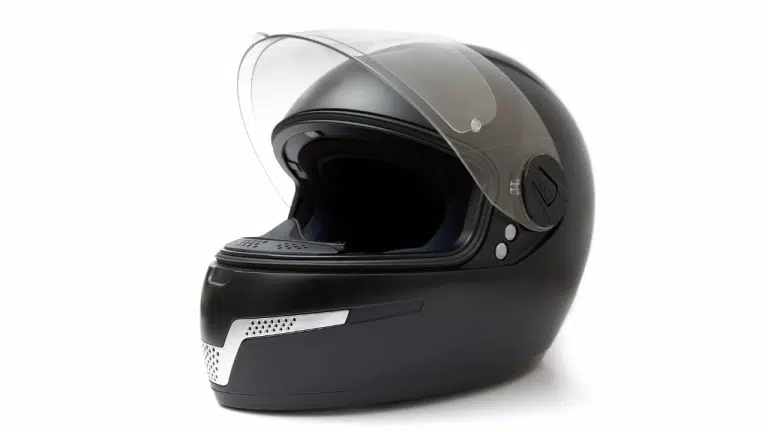Motorcycle helmets play a pivotal role in enhancing rider safety by significantly mitigating the risk of severe head injuries during accidents.
This is especially important to realize, as according to the Las Vegas motorcycle accident lawyers at The Janda Law Firm, “motorcycle accidents often lead to debilitating and sometimes life-threatening injuries”.
This comprehensive guide aims to provide riders with a deeper understanding of helmet effectiveness and safety standards.
Anatomy of a Motorcycle Helmet

Components and Materials
A motorcycle helmet is an intricately engineered piece of protective gear, consisting of three fundamental components. The outer shell, crafted from materials like fiberglass, carbon fiber, or polycarbonate, is designed to evenly distribute impact forces.
The impact-absorbing liner, typically constructed with expanded polystyrene (EPS), minimizes force transmission to the head. Lastly, the comfort padding ensures not only protection but also a snug and comfortable fit for the rider.
Helmet Types
Three primary helmet types cater to different preferences. Full-face helmets offer all-encompassing coverage, including the chin and jaw.
Open-face helmets strike a balance between protection and visibility by covering the top and back of the head, leaving the face exposed.
Modular helmets combine features of both, incorporating a movable chin bar for added versatility.
Helmet Testing and Certification

Regulatory Standards
Helmets undergo rigorous testing to meet regulatory standards, ensuring their reliability on the road. The Department of Transportation (DOT) sets minimum safety criteria, while the Economic Commission for Europe (ECE) standard, prevalent in European countries, emphasizes additional testing parameters.
Additionally, the Snell Memorial Foundation conducts non-profit testing, certifying helmets that surpass minimum safety benchmarks.
Testing Procedures
The evaluation of helmets involves several critical procedures. Impact testing simulates real-world scenarios to assess a helmet’s capacity to absorb and dissipate impact energy effectively. Penetration testing ensures a helmet’s integrity against sharp objects, adding an extra layer of protection.
Retention system testing evaluates the strength and durability of the chin strap, guaranteeing a secure fit during a crash.
The Science Behind Helmet Effectiveness

Mechanisms of a Head Injury
Understanding the mechanisms of a head injury is crucial. Direct impact occurs during head-on collisions, underscoring the helmet’s importance in such scenarios.
Additionally, addressing rotational forces becomes essential, considering the brain’s susceptibility during a crash.
How Helmets Mitigate Risks
Helmets act as a protective barrier through energy absorption, preventing impact forces from reaching the head.
They also play a crucial role in the dispersion of impact forces, spreading them over a larger surface area to minimize localized damage.
Factors Influencing Helmet Effectiveness

Three significant factors influence helmet effectiveness. Ensuring a properly fitted helmet minimizes movement and maximizes coverage for optimal protection. Regular inspections, cleaning, and adherence to maintenance guidelines prolong a helmet’s effectiveness.
Understanding the influence of variables such as impact speed and angle on helmet performance is crucial for riders seeking maximum protection.
Choosing the Right Helmet
Two essential considerations guide riders in choosing the right helmet. A snug and comfortable fit is not just about comfort; it’s fundamental to ensure a helmet performs optimally in the event of a crash.
Ventilation systems and visor options contribute to rider comfort, providing an enhanced user experience without compromising safety.
Maintaining Your Helmet

Two key aspects guide helmet maintenance. Regularly checking for signs of wear, damage and following manufacturer-recommended maintenance guidelines ensures the continued effectiveness of the helmet.
Recognizing signs indicating the need for a new helmet, such as visible damage or age-related degradation, is crucial for rider safety.
Motorcycle helmets stand as highly effective tools in reducing the risk of head injuries during accidents.
By comprehending their intricate anatomy, stringent testing standards, and the scientific principles driving their effectiveness, riders can make informed choices, ensuring a safer and more secure experience on the road.
Emphasizing responsible helmet use remains paramount, constituting a collective effort towards enhancing overall motorcycle safety.




